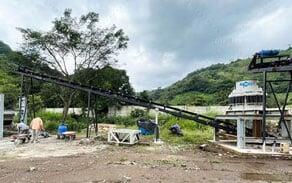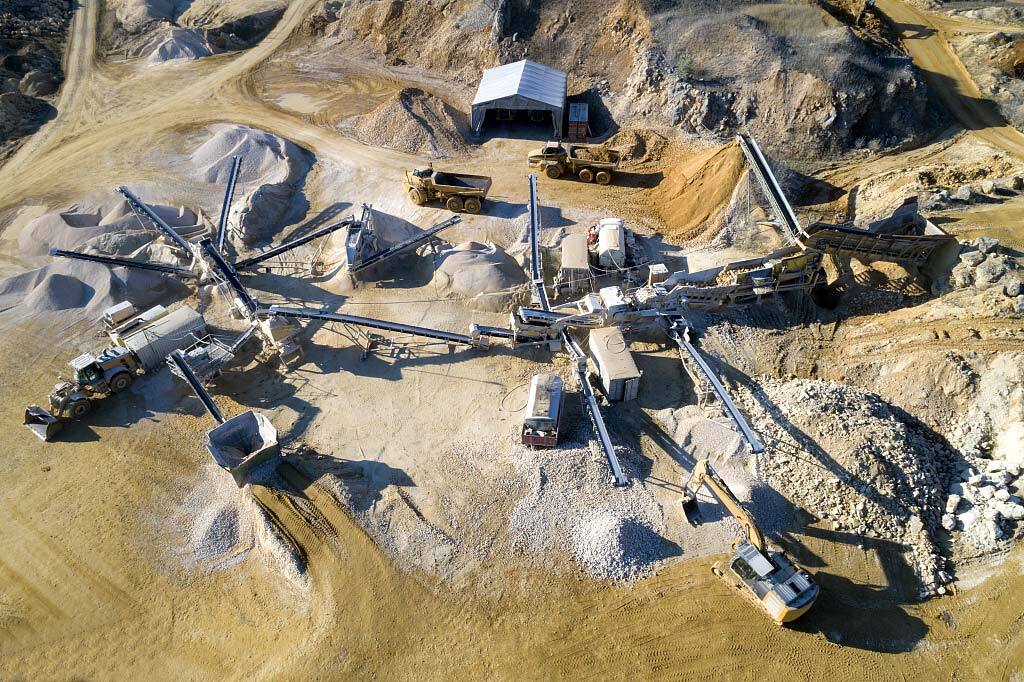Producing consistently graded aggregate is both an art and a science, particularly when targeting the ideal 10–40mm range that forms the structural backbone of quality concrete. This specific size distribution provides the optimal balance between workability, strength, and density that modern construction demands. For granite crusher machine operations, achieving this precise grading requires sophisticated understanding of crushing mechanics, screening technology, and material characteristics. The difference between adequate and exceptional aggregate often determines the quality of the final concrete product.
Granite's inherent hardness and abrasiveness present unique challenges in aggregate production. Unlike softer materials, granite requires specific crushing configurations and wear management strategies to maintain consistent output specifications. Operations that master these techniques produce aggregates that enhance concrete performance through improved particle interlock, reduced void spaces, and optimal cement paste requirements. The following insights reveal how successful crusher operations consistently deliver this crucial material specification.

Precision Crushing Chamber Configuration
The journey to perfect 10–40mm aggregate begins with optimal crusher setup. Jaw crushers serving as primary units must be configured to produce initial reduction to approximately 100–150mm, creating manageable feed material for secondary crushing stages. The real precision emerges in the secondary cone crushers, where chamber selection, eccentric throw, and crushing speed determine the final product characteristics. Modern automated systems continuously adjust these parameters based on feed size and hardness, maintaining consistent output despite varying conditions.
Crusher settings must account for granite's natural fracture characteristics and compressive strength. Operators utilize closed-side settings that create sufficient reduction ratios without over-crushing, which would produce excess fines. The optimal balance achieves maximum yield within the target size range while minimizing undersize material. Advanced operations employ laser scanning of mantle and concave wear patterns, predicting maintenance needs before wear affects product grading.
Advanced Screening Technology Implementation
Screening efficiency separates adequate operations from exceptional ones. Multi-deck vibrating screens with precisely sized apertures sort crushed material into required fractions. The 10–40mm range typically requires separation across multiple screens, with top decks removing oversize material for recirculation and lower decks separating the precise size fractions. Modern screening media incorporates polyurethane and rubber surfaces that resist blinding while providing accurate separation.
Screen inclination, vibration amplitude, and material feed rate must be synchronized to achieve optimal efficiency. Too aggressive vibration causes premature wear and particle degradation, while insufficient action leads to screen blinding and reduced capacity. Successful operations employ frequency converters that adjust vibration patterns based on material load, maintaining optimal performance throughout production cycles. Moisture control systems prevent particle adhesion that can compromise screening accuracy.

Quality Control and Process Optimization
Consistent aggregate quality demands rigorous quality control protocols. Automated sampling systems collect representative samples at regular intervals for particle size analysis. Laser diffraction particle analyzers provide real-time feedback on grading curves, allowing operators to make immediate adjustments to stone crusher machine settings or screen configurations. This data-driven approach prevents prolonged production outside specifications.
Process optimization extends beyond the crushing circuit. Successful operations implement comprehensive dust suppression systems that maintain material moisture content without over-wetting. Stockpile management practices prevent particle segregation during storage and loading. Finally, transportation protocols ensure that the carefully produced aggregate reaches concrete plants without degradation or contamination, preserving the carefully engineered particle size distribution until the moment of batching.
The production of ideal 10–40mm granite aggregate represents a sophisticated process where multiple systems must operate in harmony. From initial crushing through final screening, each stage requires precise control and continuous monitoring. Operations that master these techniques not only produce superior concrete aggregate but also achieve higher profitability through optimized yields and reduced waste. In an industry where marginal improvements compound significantly across large production volumes, the pursuit of perfect aggregate grading becomes both a technical challenge and a business imperative.

